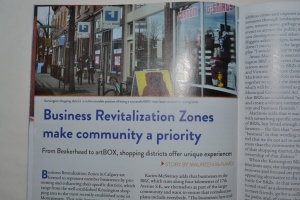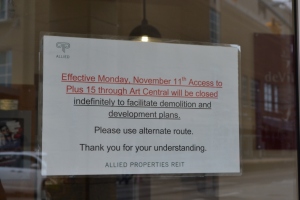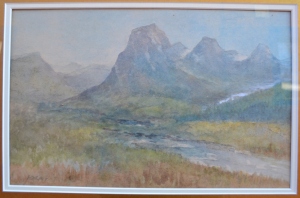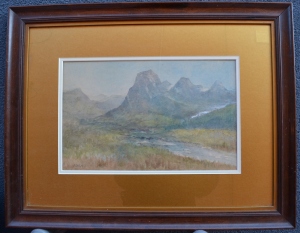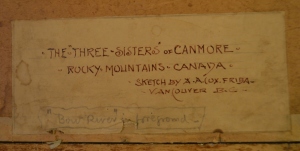Calgary’s Fast Forward often has some interesting stories in its weekly edition – especially as it relates to the arts.
I picked up the very thin newspaper today and brought it home. A small booklet fell out of the centre of the newspaper. I did a quick glance at the title Shop Local Guide 2013 and quickly tossed it into my recycling bin.
Then after a couple minutes I thought to myself, “maybe I should look at the table of contents before I toss it for good.” Sure enough there is a four-page story on Business Revitalization Zones (BRZs) in Calgary – there are ten of them. I used to pay dues to a BRZ when I had my own business and have some business history with another one and a past client relationship with yet another.
Right on the masthead is mention of two things I have discussed in this blog previously – ArtBOX on 17E and Beakerhead. OK, so now I think to myself, “I am very happy I did not toss that booklet and forget about it.”
Inside the article as someone who has been interested in organizational structures since childhood, is an interesting sentence that leads off paragraph eight, which is not fully explained later:
Annie MacInnis is executive director of the Kensington BRZ and current chair of CBIZ, which represents most Calgary BRZs (International Avenue and Victoria Park have chosen not to be members).
Also not explained is the acronym CBIZ. I guess they were not expecting someone to care. So I did some research. I love research, and found out it stands for Calgary’s Business Revitalization Zones and when I checked earlier tonight their website is temporarily down.
This is a rather interesting piece of what at first glance would seem like an unremarkable snippet of information. This is especially so from a blog perspective which talks about the arts; and from the perspective of a writer who has a lot of knowledge in this area.
Here is why.
- About a year ago just before Christmas, Market Collective had to vacate a space located in the Kensington BRZ district and found a temporary location shortly thereafter within the International Avenue BRZ district. As a casual and non-participatory observer, let’s just say this was somewhat of a fiasco in the press as I recall. I have no idea who was fault or even if anyone was; what the circumstances surrounding the move were; etc. – and it doesn’t matter. It is all water under the bridge now.
- Within the week before the flood this past June, Victoria Park BRZ partnered up with Sled Island, which is kind-of-a-big-deal. In conjunction with Sled Island’s arts festival which occupied spaces in the BRZ, the BRZ planned to do a MarketWalk (except the flood happened instead) and had to get re-scheduled.
- In August(?) the Victoria Park BRZ MarketWalk was rescheduled and held in conjunction with the annual PARKSale (which is something like Market Collective, except outdoors) which was held in the Haultain Park.
- In August, International Avenue BRZ partnered up with Calgary Arts Development Authority to convert an empty warehouse into an arts space. There have been a number of events held as a result including a theatre performance during Beakerhead, recitals, exhibitions and much more. It is going to be an exciting project when it is fully operational as it is still in the early stages of development.
- In September, Beakerhead had the rocket ship located within the Victoria Park BRZ district, which I wrote about earlier.
Then I look at what the other eight BRZs have done involving the arts in that same timeframe. Outside of the occasional thing during the summer in the Downtown BRZ especially on Stephen Avenue Mall – not much. You have things like:
- The Pride Parade
- Cowtown Opera pop-up performances during lunch hour
- The monthly artwalk held on First Thursdays during the two or three months of summer which is ironic since First Thursday was cancelled about a year ago and the Cultural District has been a virtually non-existent entity for a few years now.
I would like to think that because of the density of people during the work day and the nature of these type of events they would happen in the centre of the city regardless of whether the BRZ is involved or not.
Earlier I quoted from the FFWD story. Here is the remainder of that paragraph eight as quoted earlier:
MacInnis says all BRZs in the province have worked together to update the description of their role, which will be considered as part of changes to the Municipal Government Act. If approved, it will state that BRZs are established “to advocate, promote and create a vibrant commercial area where community and business flourish.”
I also could go to great length about the connection between creative industry(ies), business and community.
There actually are a whole bunch of things that can be discussed in this context – things such as quality of life; livable cities; energizing street activity at non-peak hours; encouraging partnerships and relationship building; gentrification; arts as an agent of change; innovation; managing chaos and flux in changing times; creativity in organizations and planning; etc. It just goes on and on. . . there are so many benefits to encouraging the arts in modern society.
So I am now really curious why the two BRZs that seem most focused on doing this (encouraging the arts) in the last short while, are not part of this larger consortium of BRZs. All BRZs it would seem are working toward the same goal in different geographical areas.
What is the deal there?
I am sure there are other questions too, but I will leave it at that.
